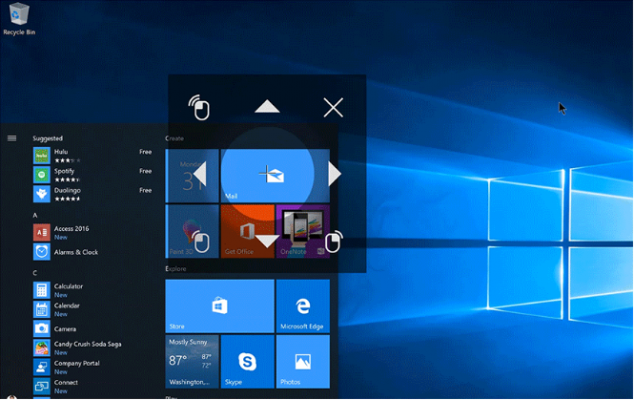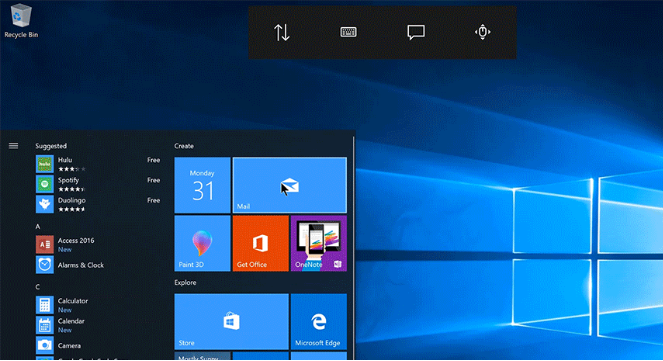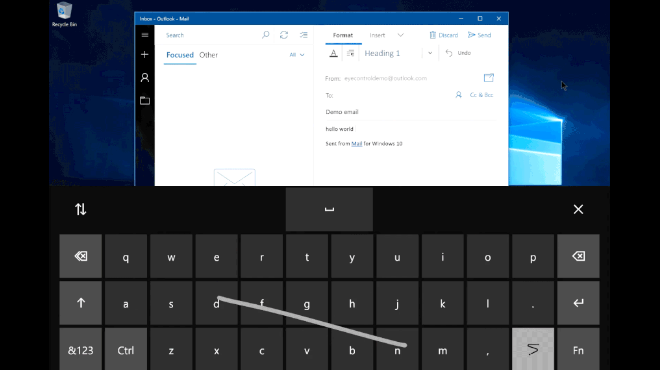Windows 10 Just Gained Eye Control: Here's How to Use It
We've seen eye-tracking technology make PC gaming more immersive, and now Microsoft is building it right into Windows itself, so you can navigate and type with just your eyes.
Delivered inside of build 16257 of the Windows 10 Insider Preview, Eye Control (which Microsoft emphasizes is still in the beta testing stage of development) allows users with compatible hardware to maneuver around their desktop with just their glances.

While Eye Control sounds like a fun new way to operate your laptop, Microsoft is positioning it as a more important tool. In the blog post announcing the new feature, the company stated that Eye Control will be "empowering people with disabilities to operate an on-screen mouse, keyboard, and text-to-speech experience using only their eyes."
MORE: Eye Tracking Is a Game Changer for VR, and I Just Tried It
The Eye control launchpad will allow users to activate a keyboard, mouse and text-to-speech functions by looking at icons in its launchpad menu on the top of the screen.

As of August 3rd, support for Eye Control is limited to the Tobii Eye Tracker 4C, though Microsoft plans to add support for the the Tobii Dynavox PCEye Mini, PCEyePlus, EyeMobile Plus, and I-series trackers in the next updates.
If your machine supports Eye Control, all you need to do is download this latest Windows 10 preview build, this update from Tobii and run Windows Update to download the Tobii Eye Tracker HIDClass Driver. Once that's done, open Settings, select Ease of Access, then Other Options and scroll down and turn on Eye Control.
Stay in the know with Laptop Mag
Get our in-depth reviews, helpful tips, great deals, and the biggest news stories delivered to your inbox.

Since Eye Control is only in the Beta stage, Microsoft shipped it with some pre-existing issues, including that it "doesn't work well in direct sunlight." Further, the Eye Control launchpad obscures the Tobii interface during device calibration, requiring users to turn off Eye Control during the setup process.
Buy Tobii Eye Tracker 4C - PC on Amazon.com
Windows 10 Performance and Productivity
- Best Windows 10 Keyboard Shortcuts
- MIrror Your Screen to a TV or Monitor
- Speed Windows 10 Boot Time
- Get Superfast Mouse, Touchpad Speeds
- Calibrate Your Monitor
- Activate 'God Mode'
- Defragment Your Hard Drive
- Measure the Time it Takes for Apps to Load at Boot
- Use Maximum CPU Power
- Enable Swipe to Delete in Email
- Copy and Paste at the Command Prompt
- Record Video of an App
- Use Offline Maps
- Get the Full Layout in Windows 10’s Touch Keyboard
- Create a .Reg File for Easy Registry Hacks
- Record PC Gameplay on the Xbox App
- Perform a Clean Install of Windows 10
- Uninstall Windows 10 and Roll Back to 7 or 8
- Enable the Linux Bash Shell
- Generate a Detailed Battery Report
- Turn a PC into a Wireless Display
- Open Folders in the Taskbar
- Open Sites in the Taskbar
- Import Gmail Contacts
- Get Android Notifications
- Use Multiple Desktops
- Use Eye Control
- Use the Timeline Feature to Resume a Task
- Send Web Pages from Phone to PC
- All Windows 10 Tips
- Increase your Battery Life
